The Circuit Trails
Runners on Schuylkill Banks River Trail | Photo by Laura Pedrick/AP Images
Vision
Proud to Trail
The Circuit Trails is an innovative, regional urban trail network connecting people of all ages to jobs, communities and parks in Greater Philadelphia and New Jersey. When complete, the Circuit Trails network will encompass more than 860 miles of trails—including five counties in Pennsylvania and four in New Jersey. Today, more than 300+ miles are complete, with 50 currently in development and more than 400 yet to be built. Each segment will continue to increase in value as a recreational and transportation asset as more of the network is connected.
By the time it is complete, which is expected to be in 2040, more than 50 percent of the region’s population—over 3.1 million people—will live within a mile of the Circuit Trails.
The Circuit Trails comprises approximately 30 pathways that provide endless opportunities for commuting and recreation across nine counties—including Philadelphia, Chester, Montgomery, Delaware and Bucks in Pennsylvania, and Burlington, Gloucester, Camden and Mercer in New Jersey. The network is revolutionizing the way we view trail systems and providing safe routes to business, employment and cultural destinations in the region.
Circuit Trails Footprint
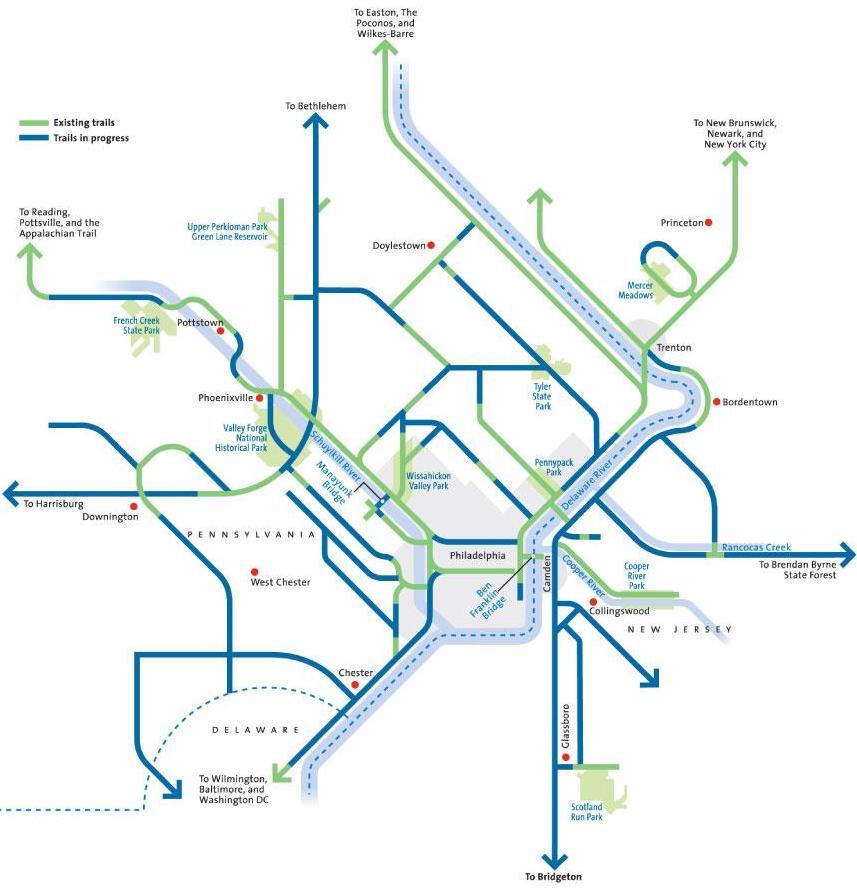
Major arteries of the Circuit Trails footprint are rail-trails or canal trails, including the Schuylkill River Trail, Schuylkill Banks Boardwalk and Delaware and Raritan Canal State Park Trail. Trails like the D&L Trail (which cuts through 4,500 acres of dramatic river gorge parkland along the Lehigh River) fast-track bike tourists to small towns, and other routes like the developing Merchantville Bike Path, Pennypack Trail, Chester Valley Trail, Forbidden Drive and Cooper River Trail are helping to connect urban populations to rural landscapes, residential neighborhoods, commercial corridors, recreation sites and cultural venues.
Stories from the Circuit Trails
View More Blogs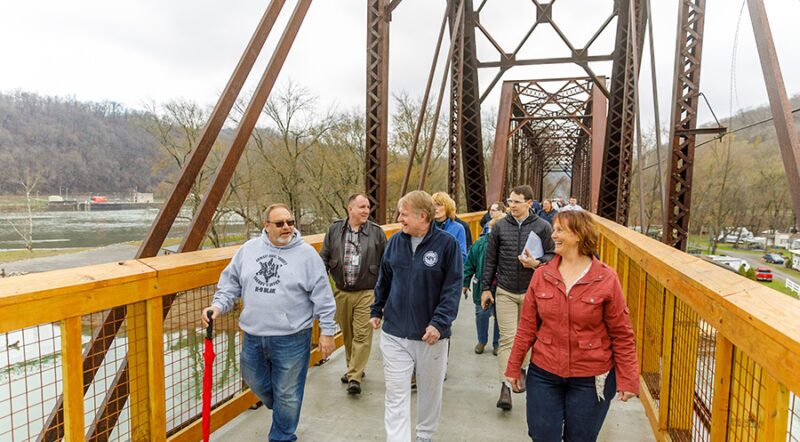
TrailNation in Action: Creating Lasting Impact in 2024
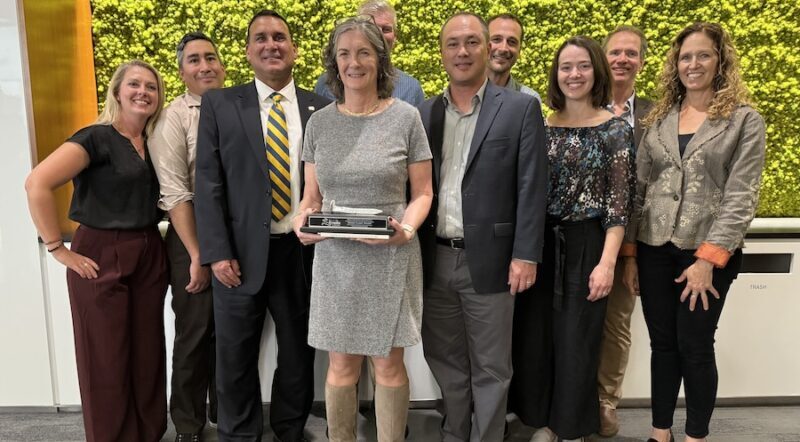
Rail-Trail Champion Sarah Clark Stuart On Philadelphia’s Visionary Trail Network
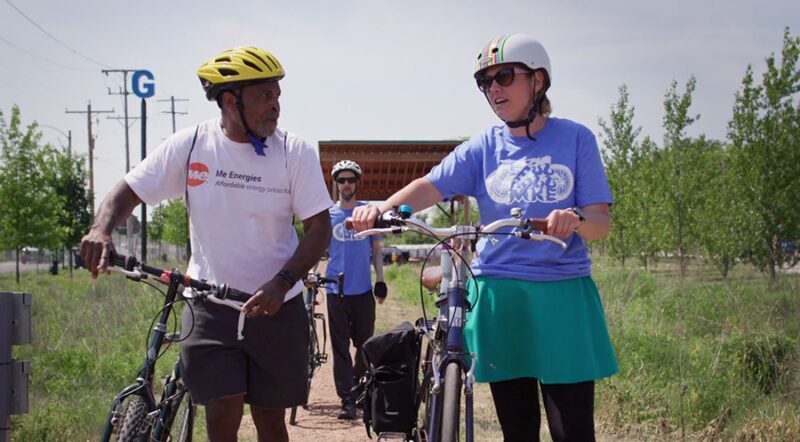
Reconnecting Communities Program Elevates Role of Trail Networks in Revitalizing Communities
What This Means for Philadelphia and New Jersey
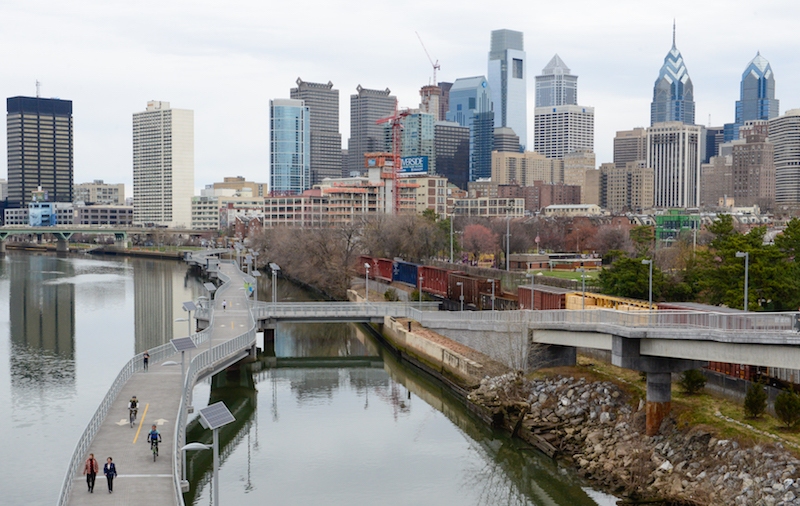
The impact of the Circuit Trails is already being felt across education and employment hubs, and areas of concentrated poverty, like parts of Philadelphia and Camden, New Jersey. The endless new connections created across the trail network will result in economic, social, health and environmental benefits for all the communities—rural, suburban and urban—in the project footprint.
Making Communities Healthier
While the trail network is not yet complete, the Circuit Trails are already inspiring healthier lifestyles and physical activity in the Philadelphia region and in New Jersey. Studies show people are significantly more likely to get recommended levels of exercise when they live within close proximity to trails and open space. A 2011 study on the health benefits of recreation on protected open space in Southeast Pennsylvania helped avoid $800 million in health-care costs annually. The Circuit Trails network has been embraced as a vital tool in preventative care through initiatives like the D&L National Corridor’s and St. Luke’s Get Your Tail on the Trail program—and Rails-to-Trails Conservancy Prescribe-a-Trail walking programs in the region help make the case for trails as tools for a healthy life. Already, nine hospitals have joined in these efforts.
Strengthening the Regional Economy
Individual trails in Pennsylvania and New Jersey have long proven their economic power—and taken together, the Circuit Trails have the potential to generate exponential tourism and economic development benefits for the region. A study of the Schuylkill River Trail—a major component of the Circuit Trails—was found to have had a direct economic impact of $7.3 million. In New Jersey, where the trail network is burgeoning, a New Jersey Department of Transportation economic impact study found that active-transportation-related infrastructure, businesses and events contributed nearly $500 million to the New Jersey economy in 2011. A study of Southeast Pennsylvania found that open spaces attracted visitors, helped create/sustain 7,000 jobs and resulted in $566 million in expenditures. As the trail network grows—so too will its impact.
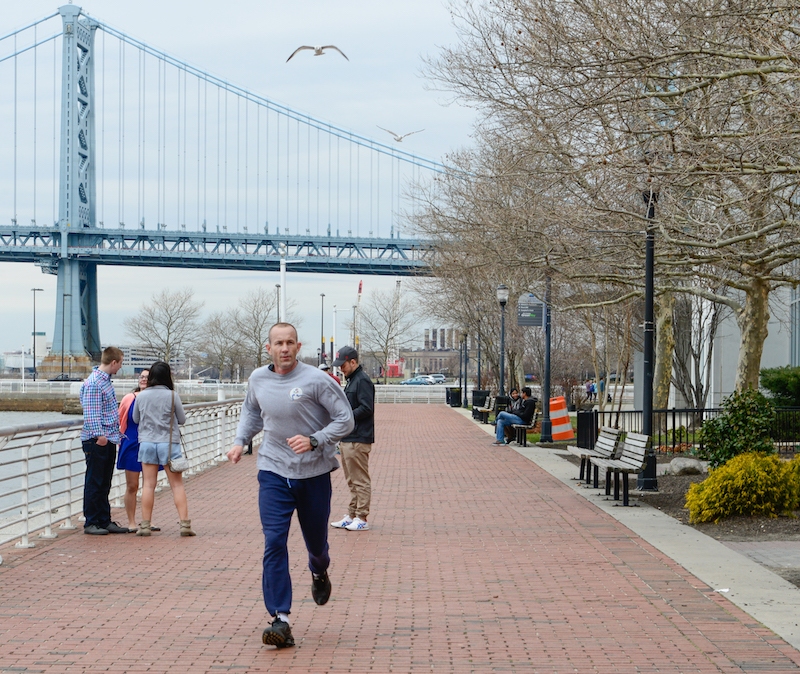
Creating Connections via Transportation Equity
The Circuit Trails are providing safe off-road connections to many critical community destinations—particularly in historically underserved areas—and are helping to establish cultural and social linkages to the region and to nature. For example, through RTC’s Watershed Education by Circuit Trails program, youth were empowered to travel by bike and by foot—some for the first time in their lives—to various points in Philadelphia. Likewise, a disused rail line in a disadvantaged area of Pennsauken, New Jersey, between Dudley Grange Park and the “Merchantville Mile” rail-trail, could provide a safe off-road connection to the Ben Franklin Bridge and into Philadelphia.
RTC is working with New Jersey Transit to allow Camden County access to the land for development as a trail. This is the first phase of a project that will ultimately connect Burlington County to Camden and the Delaware Waterfront.
Protecting the Region’s Watersheds
Trails help connect and preserve our natural landscapes, provide needed links between fragmented habitats and offer tremendous opportunities for protecting plant and animal species. Greenways can also serve as buffer zones that protect our waterways and streams from pollution runoff. Thanks to generous support from the William Penn Foundation—the Circuit Trails network served as the springboard for youth to visit local watersheds in the Philadelphia area, learn about their direct connections to the health and wellbeing of local residents and wildlife, and become stewards of the environment with other fellow youth and public leaders.
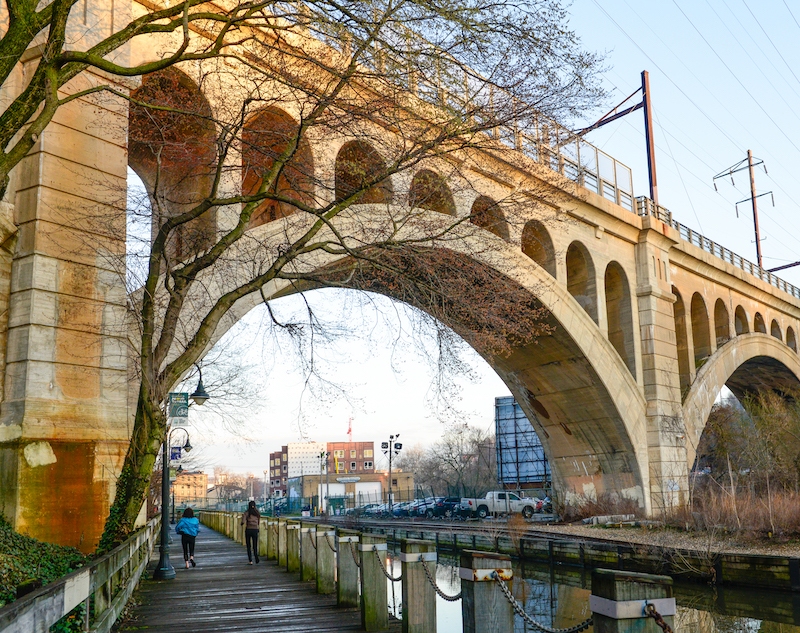
Preserving Our History
Philadelphia claims a rich cultural and historical heritage going back to the country’s earliest days. The Circuit Trails helps connect that history so trail users can experience it while also making larger regional connections to the outdoors. For example, the Schuylkill River Trail provides a seamless connection from Center City, near Independence Mall—home of the Liberty Bell, Congress Hall and the Benjamin Franklin Museum—northwest to Valley Forge, the site of the 1777-78 winter encampment of the Continental Army. The many connections made by the completed route will provide endless links to the region’s rich past and help preserve these links for a vibrant future.
Circuit Trails Coalition
Since its May 2012 launch, the Circuit Trails Coalition has brought together nonprofit organizations, foundations and agencies to advocate for its completion, with an eye toward raising the profile of trails and their many public benefits. As a founding coalition member, RTC contributes years of technical experience in trail building and advocacy to the project.
Get Involved
Find out how you can help make the Circuit Trails network a reality.
Follow the Circuit Trails on social media.